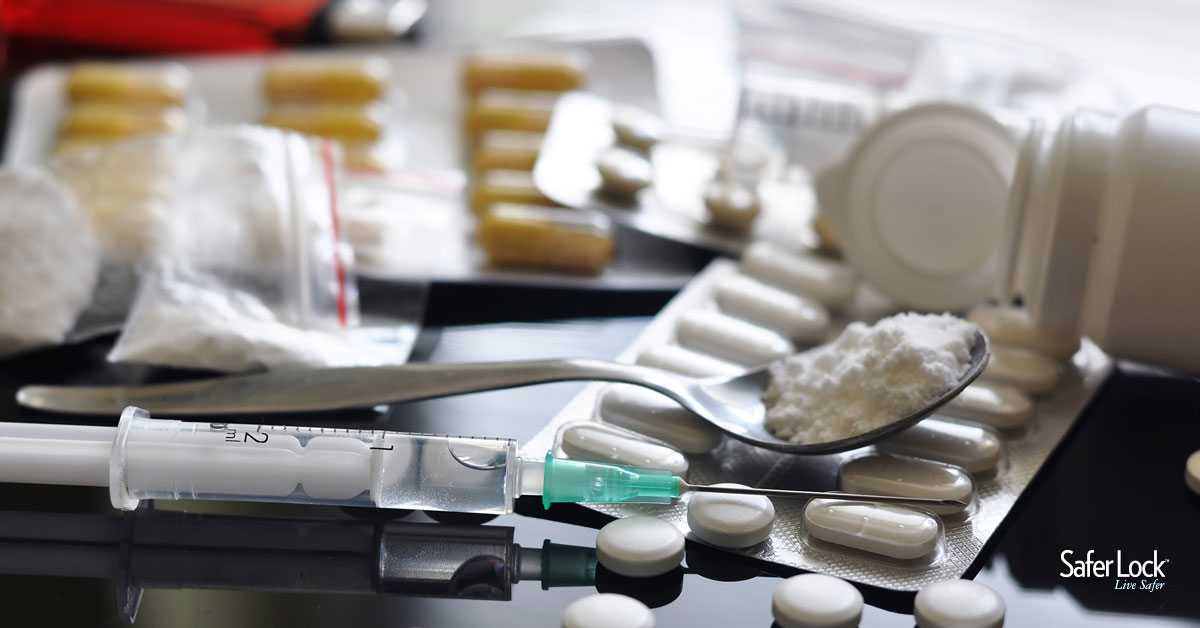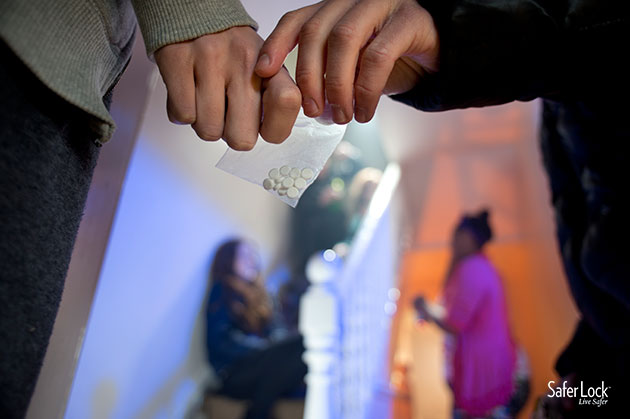America is being plagued by an epidemic that is surging through communities from coast to coast. It’s spreading like wildfire and tearing families apart without discrimination. This widespread disease is now responsible for more annual deaths than car crashes and even gun deaths. Politicians, policymakers, and the news media have all announced:
America has an opioid epidemic.
From prescription painkillers to heroin, and a new breed of fatally dangerous opioids - our children, neighbors, and communities are at an all time high-risk for addiction and overdose death.
Here’s what you need to know about opioids and the epidemic, which could affect your community, neighbors, or even your own family.
What are Opioids?
Opioids are a class of drug which includes legal prescription pain relievers such as oxycodone, hydrocodone, codeine, morphine, and fentanyl, as well as illicit drugs such as heroin.
How do Opioids Work?
Opioids work by reducing the perception of pain producing a sense of well-being. They can also produce unpleasant side-effects as well, such as drowsiness, nausea, mental confusion, and constipation.
When opioids enter the body, whether from being ingested, inhaled, or injected, they enter the bloodstream and make their way to the brain. The chemical structure of opioids mimics the structure of naturally occurring transmitters, which tricks the brain into allowing them to attach to - and activate - opioid receptors on the surface of certain nerve cells.
The brain is then flooded with dopamine, a feel-good neurotransmitter which leads to the decreased perception of pain and increased feeling of pleasure.

How Addictive are Opioids?
It’s important to understand how opioids work in order to see the high potential for their addiction.
When opioids trick the brain into producing feel-good neurotransmitters like dopamine, they are targeting the natural rewards center of the brain. When the reward center of the brain is activated, it is hard-wired to remember the action that led up to that feeling of pleasure, and to seek that action out in the future.
In other words, the brain “learns” that taking opioids is a good thing that should be repeated.
Unfortunately, the brain also begins to become less sensitive to the effects of opioids over time.
As the body becomes more tolerant to the effects of opioids, more and more are needed to achieve the feelings of pleasure, well-being, and pain relief.
What are the Long-term Effects of Opioid Use?
Tolerance is just one of the effects of long-term use of opioids. Repeated exposure to escalating doses of opioids actually alters the brain so it functions normally when the drug is present… and abnormally when it’s not.
This leads to symptoms of withdrawal, such as jitters, anxiety, muscle cramps, and diarrhea. The rewiring of the brain can also prevent the experience of pleasure from other activities, such as eating.
Other serious, long-term effects of opioid use can include abnormal pain sensitivity, hormonal disruptions, irregular menstrual periods, reduced fertility and libido, reduced testosterone, and reduced energy and drive.
The way that opioids affect the brain make them highly addictive. And potentially deadly.
What’s Causing the Opioid Epidemic?
Prescriptions for opioid pain relievers are high in the U.S., and between 1999 and 2014, prescription opioid sales nearly quadrupled. During this same period of time, overdose deaths from prescription opioids have also quadrupled.
In 2012, 259 million prescriptions were written for opioids: more than enough to give every American adult their own bottle of pills.
Opioid prescriptions are fueling the epidemic of addiction and overdose. But not necessarily in the way you may think.
Most people who abuse prescription opioids aren’t getting them from a prescription – they are getting them from friends, relatives, and even drug dealers or strangers.
Prescription opioid abuse may start with a prescription for painkillers after a surgery or injury. Over time, it may evolve into borrowing, buying, or stealing pain pills from friends, relatives, or strangers.
But when prescription opioids become harder and harder to find, or too expensive to purchase, the path of opioid addiction often takes a darker turn.
Heroin and Fentanyl: an Increase in Illegal Opioids
Heroin and fentanyl are highly addictive synthetic (man-made) opioids. The use of these synthetic opioids has dramatically increased in recent years, and so have overdose deaths related to their use.
- Heroin overdose deaths more than tripled between 2010 - 2014.
- Fentanyl overdose deaths increased by 500% between 2013 - 2014.
Both heroin and fentanyl are cheaper than prescription opioid painkillers, and often easier to get illegally on the street.
Previous misuse of prescription opioids is the biggest risk factor for beginning heroin use. Approximately 3 out of 4 new heroin users report having abused prescription drugs before starting heroin.
Heroin use has increased among most demographics: both men and women, across all income levels, and most age groups.
The Rise of Fentanyl
Fentanyl is not a new drug, but it hasn’t received the national attention that it is now. Fentanyl has been used as a painkiller since the 1960s, and is still prescribed today; most often for acute and chronic pain associated with cancer. The drug is 30x -40x more potent than heroin, and 100x more potent than morphine.
But there’s another form of synthetic, non-pharmaceutical fentanyl that is on the rise, and it’s having deadly consequences.
Drug traffickers are obtaining the key ingredient for fentanyl inexpensively from China, where its sales aren’t regulated. It’s then being passed off as other drugs: pressed and dyed to look like oxycodone pills, or passed on as heroin or cocaine.
- Fentanyl is so potent that a single dose can be deadly.
- Illicit fentanyl can kill within minutes by paralyzing chest muscles and preventing breathing.
Fentanyl is flooding into our country. This synthetic opioid is cheap, easy to pass off as higher value drugs like heroin and prescription pills…. and it’s killing Americans at an alarming rate.
Fighting the Opioid Epidemic: Policies, Prescription Reform, and Prevention
How do we fight back against an increasing storm of opioid misuse, abuse, addiction, and overdose death?
This complicated issue is being addressed on many levels, including federal, state, local county and city:
- The White House recently announced $53 million granted to states to combat the opioid epidemic by expanding prescription drug monitoring programs, access to addiction treatment, and access to the overdose drug, Naloxone.
- The U.S. Justice Department is enlisting Federal Prosecutors to share information on over-prescribing doctors, and to help local authorities better identify traffickers.
- U.S. Surgeon General Vivek Murthy wrote a letter to 2.3 million healthcare providers, urging them to help turn the tide of opioid misuse. He asked physicians to educate themselves about the issue, screen patients for signs of opioid abuse, and to treat addiction as a chronic illness.
- The state of Illinois recently signed into law a measure that requires locking pill bottles be used for any prescription containing hydrocodone.
- Cities and counties are developing task forces to address heroin and opioid misuse through education, prevention, overdose response, addiction treatment, public safety enforcement, and supply reduction.

How You Can Defend Your Home and Family Against the Opioid Epidemic
You can take measure to protect your loved ones against this tragic disease. The opioid epidemic is facing Americans from every demographic and walks of life, across all ages. The biggest mistake you can make is believing that it won’t happen in your town, on your street, or to your family.
Here’s how to protect yourself and your family:
- Stay informed. Know the risks associated with prescription opioid painkillers for dependence and misuse.
- Talk to your kids. Many teens who begin misusing prescription opioids mistakenly believe they are less harmful than illicit street drugs because they come from a doctor.
- Lock up your meds. If anyone in your family has a prescription for opioids, secure them with a locking prescription cap or locking medicine box. Most people who misuse prescriptions get them free from a family, friend, or unlocked medicine cabinet.
- Be diligent. Look for the signs of teenage drug use, and know what to do if you suspect drug abuse or an overdose.
The opioid epidemic is serious. It’s affecting the lives of people all across America, leaving a path of destruction and death in its path. And these people are not strangers. They are our neighbors, friends, and family members.
But it’s not a hopeless situation. The more we know about the dangers and risks of opioid addiction and overdose, the better we can arm ourselves against this horrible scourge. And the sooner we can turn the tide and fight it.




